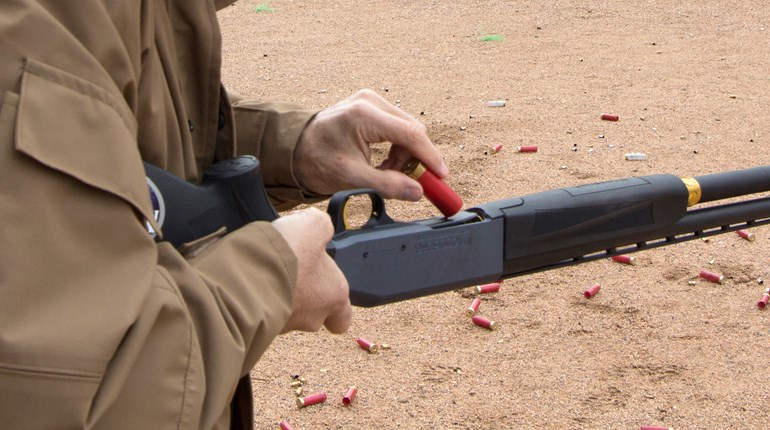
Of the myriad self-defense firearm-training classes available, none are more impactful for intermediate and advanced students than force-on-force (FOF) classes. FOF training is a realistic, scenario-based experience that incorporates the use of guns designed to fire non-lethal marking rounds, such as Simunition, that leave a smudge of paint upon impact. They can inflict some pain when they hit you in a part of the body not adequately protected. While eye, face, neck and groin protection is absolutely essential, accepting the potential for a painful welt can introduce a level of adrenaline that will dramatically amplify the overall training experience.
FOF is as close to a real life-or-death scenario as civilians can get due to the overwhelming stress it can induce. When conducted properly with trained role players acting as attackers and/or innocent third parties, students will experience many of the psychological and physiological effects of a real fight. These adrenaline-based “fight-or-flight” effects include tunnel vision, auditory exclusion, loss of minor motor function, threat fixation, “fog of war” or clouded thinking and poor recollection of what transpired. It is the one thing we can all do to inoculate ourselves as well as possible against the stress of a real life-or-death struggle. In the simplest terms, FOF is stress inoculation.
Every scenario brings new lessons no matter how perfectly you think you might react to them. Even in scenarios where you performed admirably, you’ll learn tactics to perform better. For example, in one scenario I was placed in front of an enclosed ATM station and pretended to withdraw money. I was then approached from behind by a bad guy with a gun. In response, I drew my gun, wheeled and fired ... and I got lucky when the bad guy’s gun jammed so I survived the fight. Afterward, I was praised for my “bravery,” but I was also admonished for it, because in this scenario where an attacker had the drop on me, I likely would have been better suited to give the guy the money to buy time while waiting for a better opportunity to defend myself. The point is, in each situation, you learn about aspects of self-defense that many of us have never considered.
Another scenario involved me coming home from work to a front door that was cracked open. No one was supposed to be home. The evidence indicated a break-in had occurred. The proper course of action here would be to retreat to safety while calling the police. No property inside was worth risking my life to save, and so that’s what I did.
As I was dialing 911 on a pretend cell phone, my two children began screaming from their upstairs bedroom. Now everything had changed. This was now about the life of my kids, not property. They were not supposed to be home, but they clearly were, and they were being attacked by one or more intruders. Waiting for the police was not an option; I had to act.
I pushed the door open as I stepped to the side of the opening. Someone from inside fired at me. Using proper cover and concealment and exposing only my muzzle and dominant eye, I engaged and incapacitated the shooter without being hit. I quickly cleared the living room and began moving upstairs. Before it was all over, I had “shot” the three home invaders and saved the kids.
While I got the job done and shot well, there were certainly things I could have done better from a tactical perspective, and all of those lessons still live with me today, making me more likely to prevail in any fight that is forced upon me. As mentioned, the biggest lesson came after the smoke had cleared.
When “law enforcement” arrived, I was all too eager to answer their questions since I had obviously saved the lives of my children from attackers. After awhile, one asked me why I was lying to her. I was incredulous. What I was telling them was not matching up with the location of shell casings and other evidence on scene. As it turns out, my memory of what had transpired and what had actually transpired were very different, and it made me look like a liar. The lesson hit me like a sledgehammer.
This is why the proper course of action for any citizen involved in a self-defense situation, no matter how obviously justified, is to provide basic identifying information to police and then tell them you would like to speak to your attorney before answering any of their questions.
This is yet another example highlighting the importance of FOF training. If it is within your financial means, I implore you to sign up for a force-on-force class with a reputable trainer. You can thank me later. If you are an FOF veteran, you know one more class will only make you that much stronger. The learning process never ends.


































